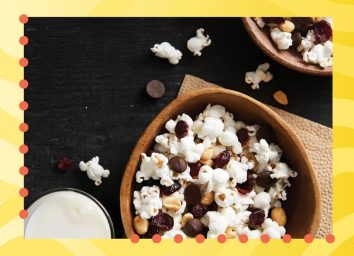15 Ways Grocery Stores Trick You Into Spending More
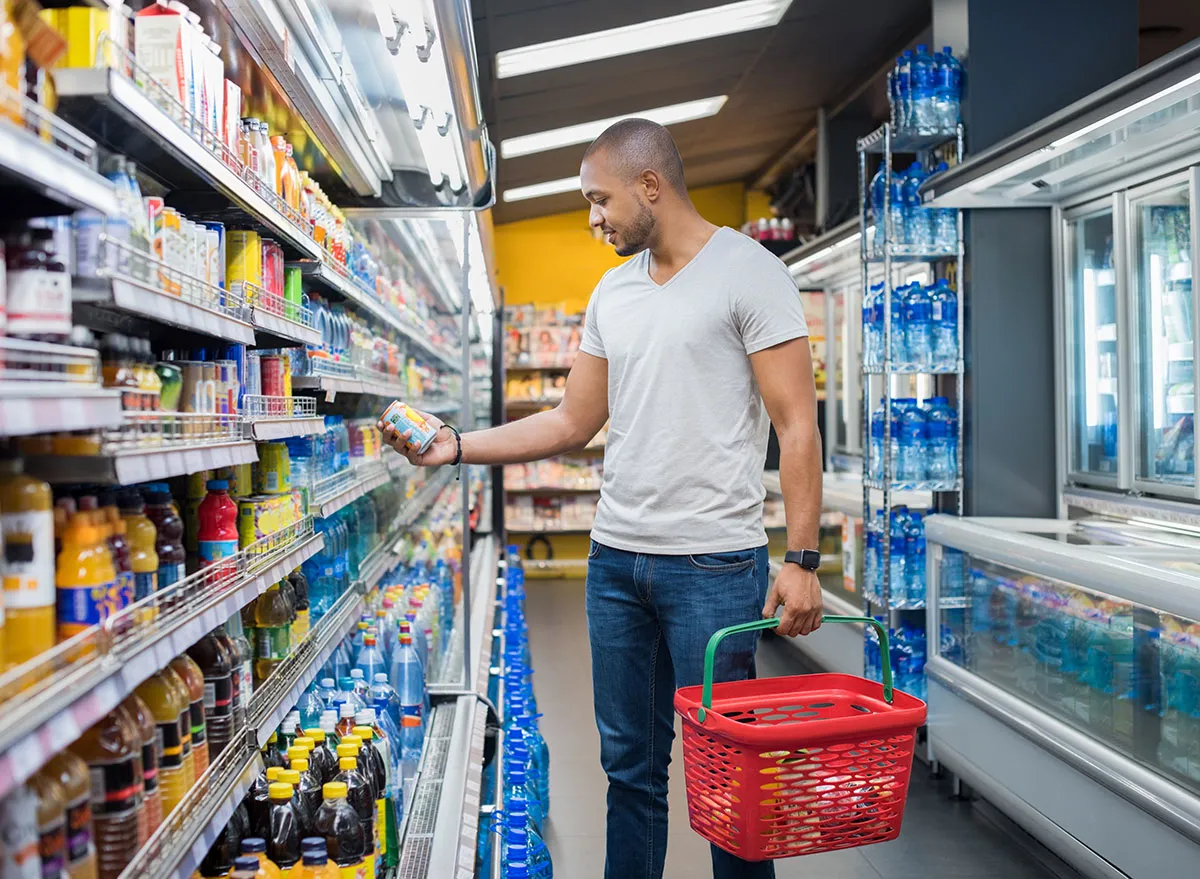
Have you ever gone to the store with a simple list and found yourself leaving with way more food than you intended to buy—and a thinner wallet? It’s no mistake; grocery stores strategize gimmicks to make you spend more money. Instead of being another victim of supermarkets’ games, keep an eye out for these slick tactics and keep your money in your pocket.
And for more, check out these 15 Classic American Desserts That Deserve a Comeback.
Free samples
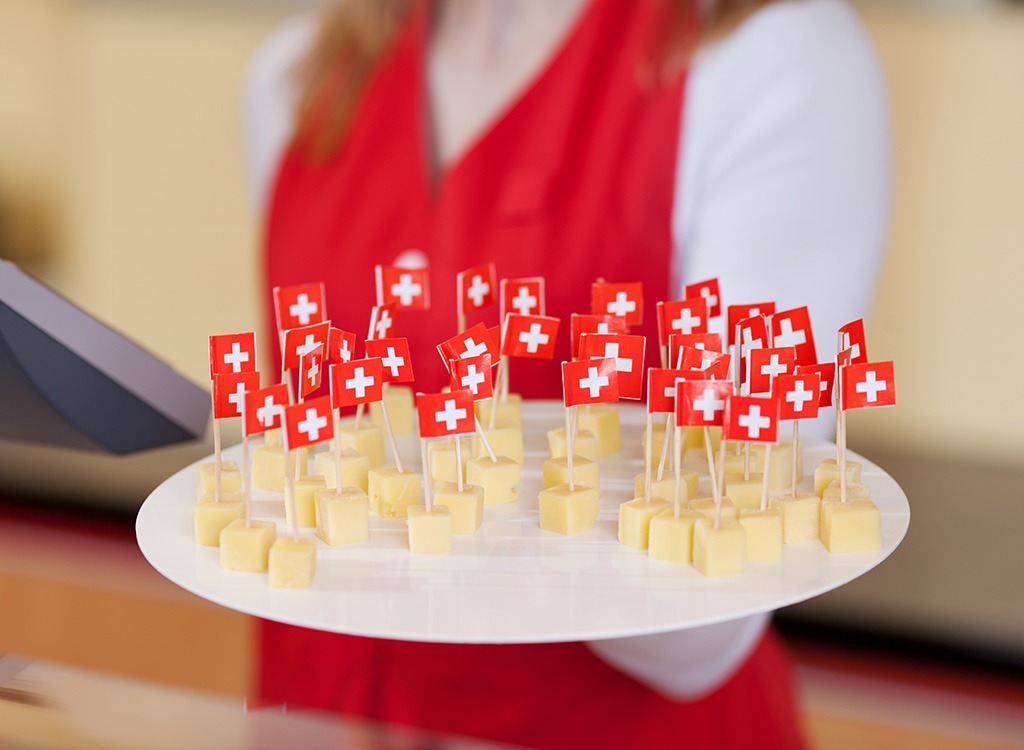
Anything labeled “free” would make you think that you’re saving money, but that’s not true. These bite-sized samples give you just enough of a taste to cause you to buy the full-sized item instead of sticking to your shopping list.
Beefing up your meat
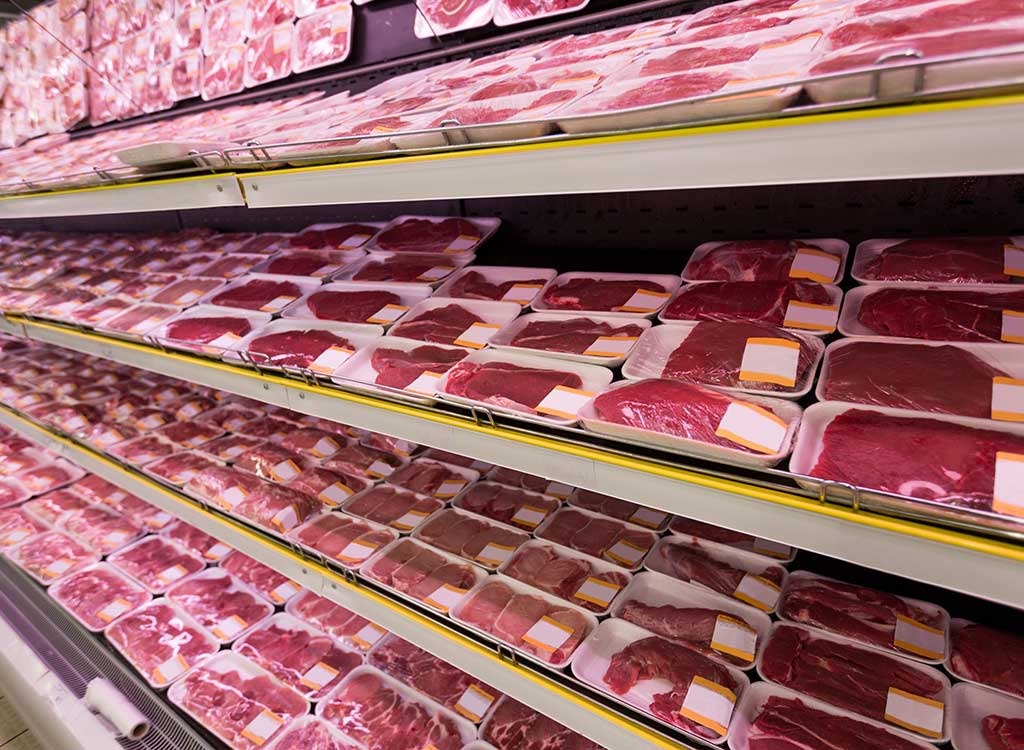
You may have noticed that some of the meat in the grocery store have a note that says that a saline solution has been added. That means that the giant piece of steak you’re holding has been injected or soaked with water. It may seem harmless, but it gives the meat more weight, causing you to pay more for less meat.
STAY INFORMED: Sign up for our newsletter to get the latest food news delivered straight to your inbox.
‘Cage-free’ eggs
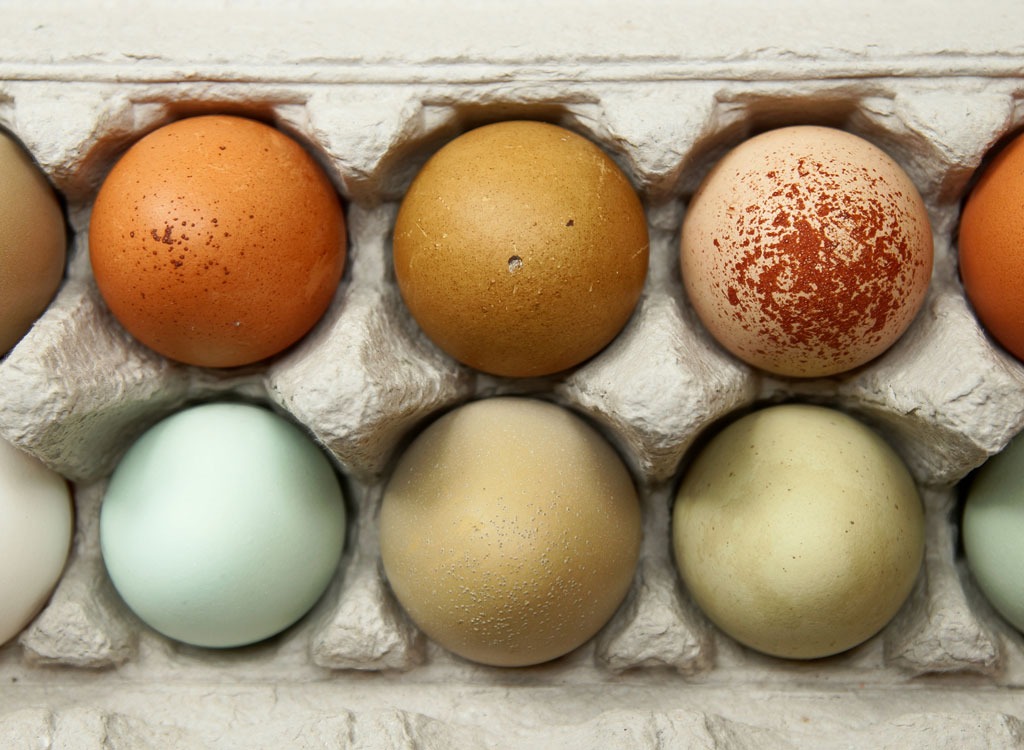
We hate to burst your cruelty-free bubble, but some of those cage-free eggs aren’t truly cage-free. Some factories just use bigger cages that can be considered a “cage-free” environment, which raises the price of those eggs at little cost to the farmer.
Not sure if your eggs are still okay to eat? This Is the Quickest Way to Tell If Eggs Are Still Good.
Giant shopping carts
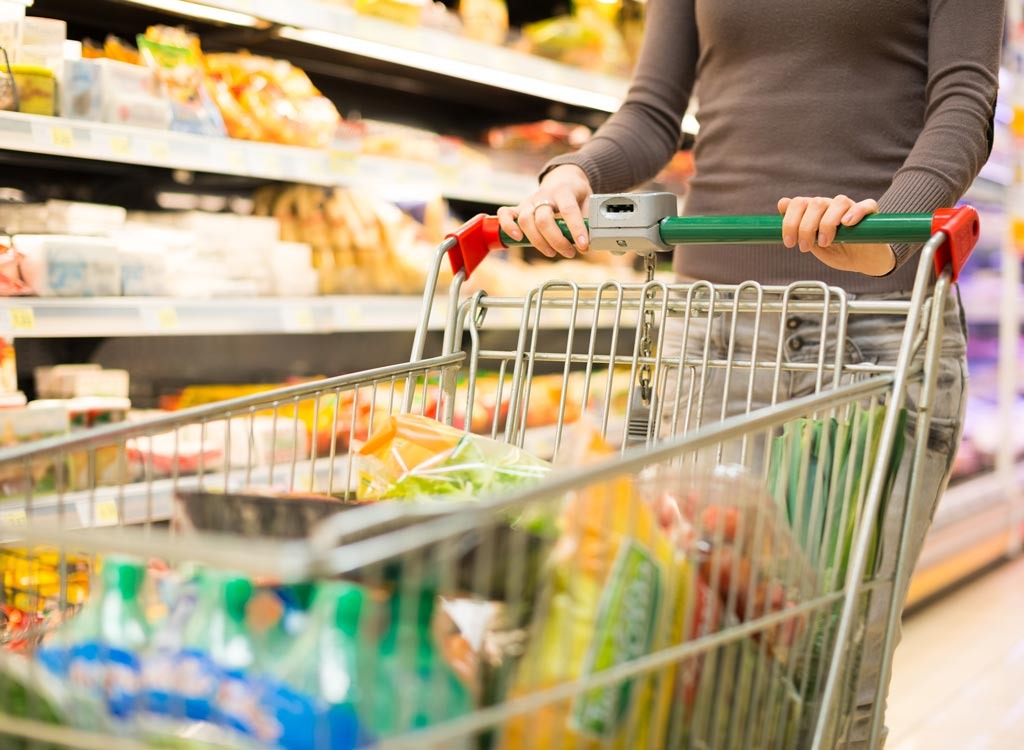
Grocery stores have slowly been expanding the sizes of their carts. The reasoning behind this cart size increase is so you load up more food in your cart without even noticing! To make sure you don’t overindulge at your next grocery trip, try using a shopping basket instead to limit the number of items you can grab.
Impulse items near the register
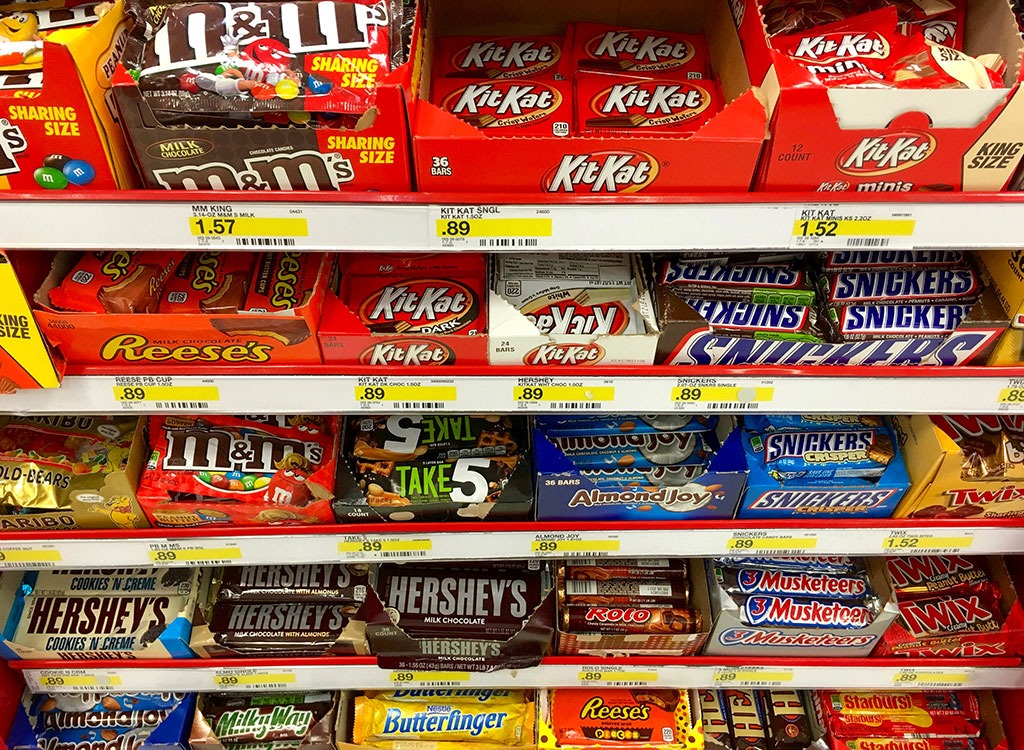
Every cash register is lined up with candy, soda, magazines, and other tiny items you would never think to pick up. Grocery stores place easy-to-grab items near the register as impulse items so you can quickly add them to your cart.
Even Costco will get you to shell out your money! Here are 7 Sneaky Ways Costco Gets You to Spend More.
Pricey eye-level items
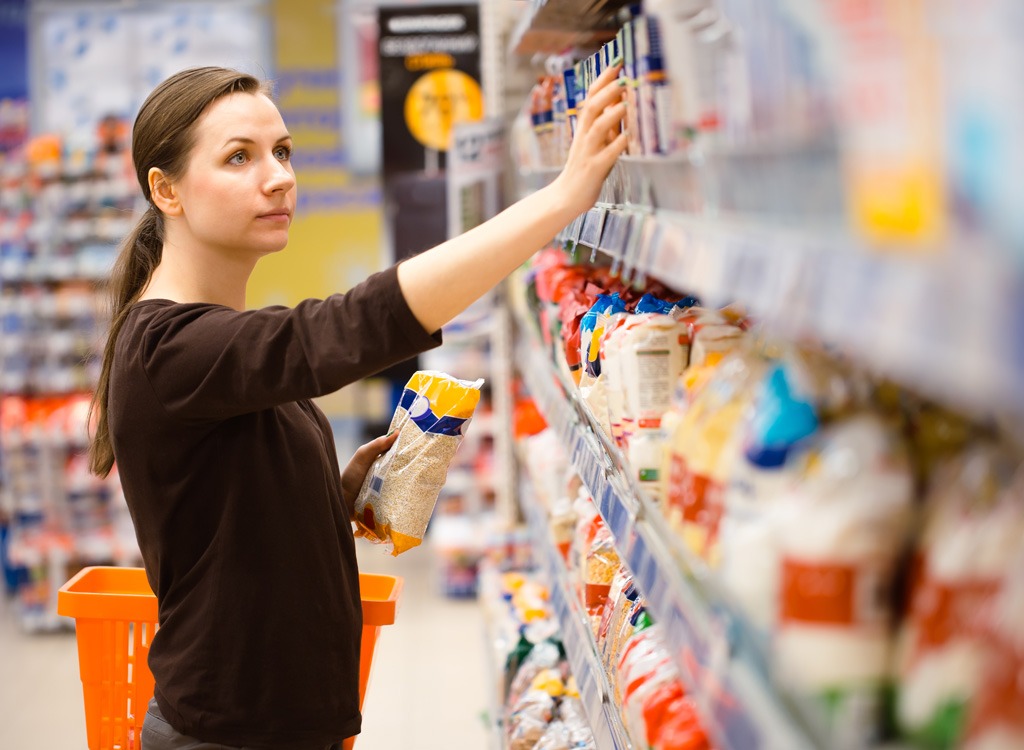
The first place you look when searching for a product in an aisle is eye-level. Supermarket owners know that, so they place the priciest items on the middle shelves. To save a few bucks, always look at the bottom and top shelves to find cheaper deals on products.
Hiding the essentials
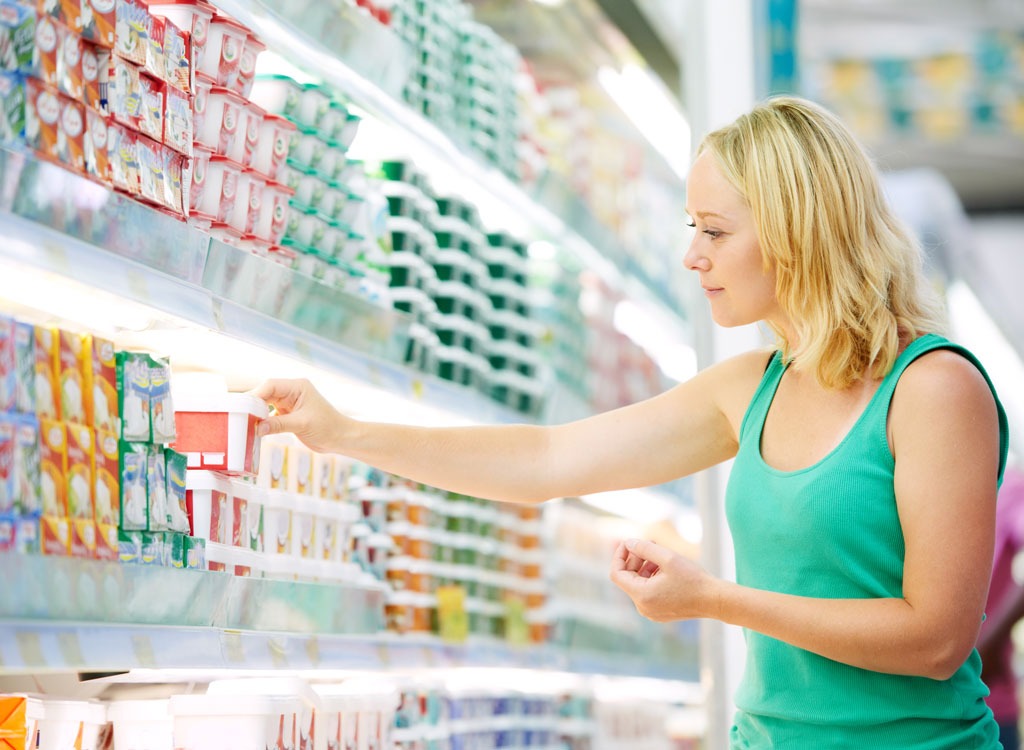
Have you ever noticed that all of the essential items, like bread and milk, are stored in the back of the store? That’s not just a coincidence; supermarkets put those items in the back of the store so you have to trek through the aisles and pass more tempting junk food items, like chips and soda, just to get to what you need. Instead of giving into those products, keep a list of groceries at hand and stick to it to stay on track.
And as you’re grabbing your food for the week, here are 12 Secret Grocery Shopping Tips You Should Be Following Right Now.
10-for-$10 deals
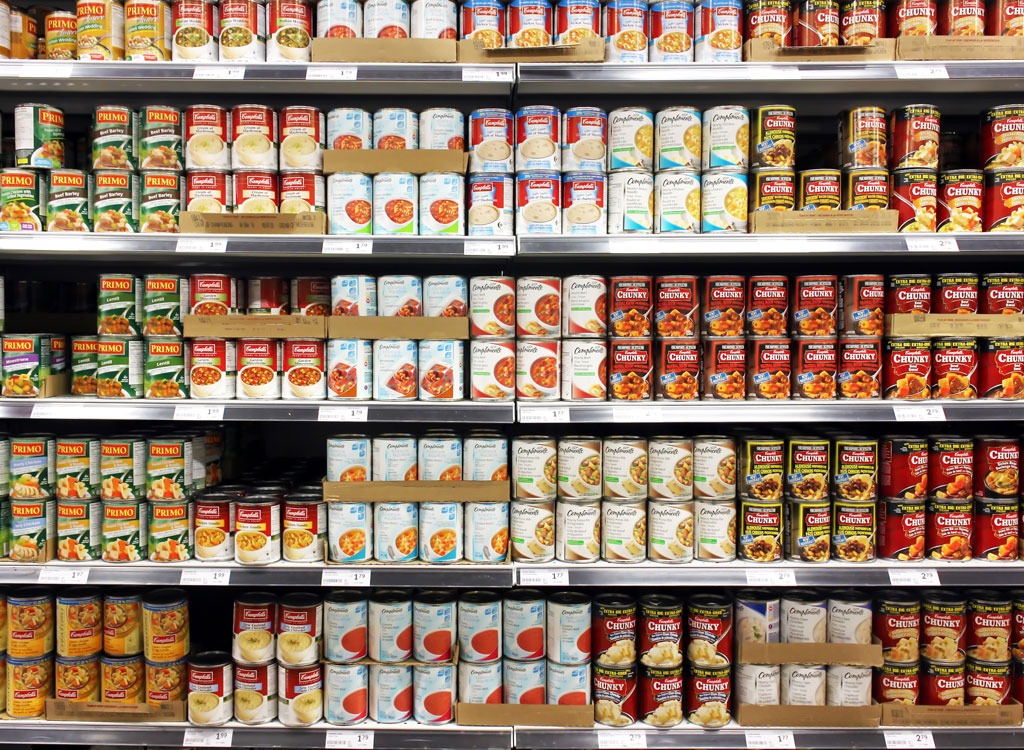
When you see 10-for-$10 deals, you think you’re saving money by grabbing a few of these items in bulk for just a buck each. But, if you read the fine print, you’ll notice that many sales like these still apply when you buy less than the advertised amount. So, don’t load your cart with tons of the same item (which will probably expire before you even get to finish it all anyway), only grab as many as you need. However, always read the fine print, because some 10-for-$10 deals only qualify if you buy the advertised amount—but ask yourself if you really need 10 jars of salsa at once.
Eye-catching signs
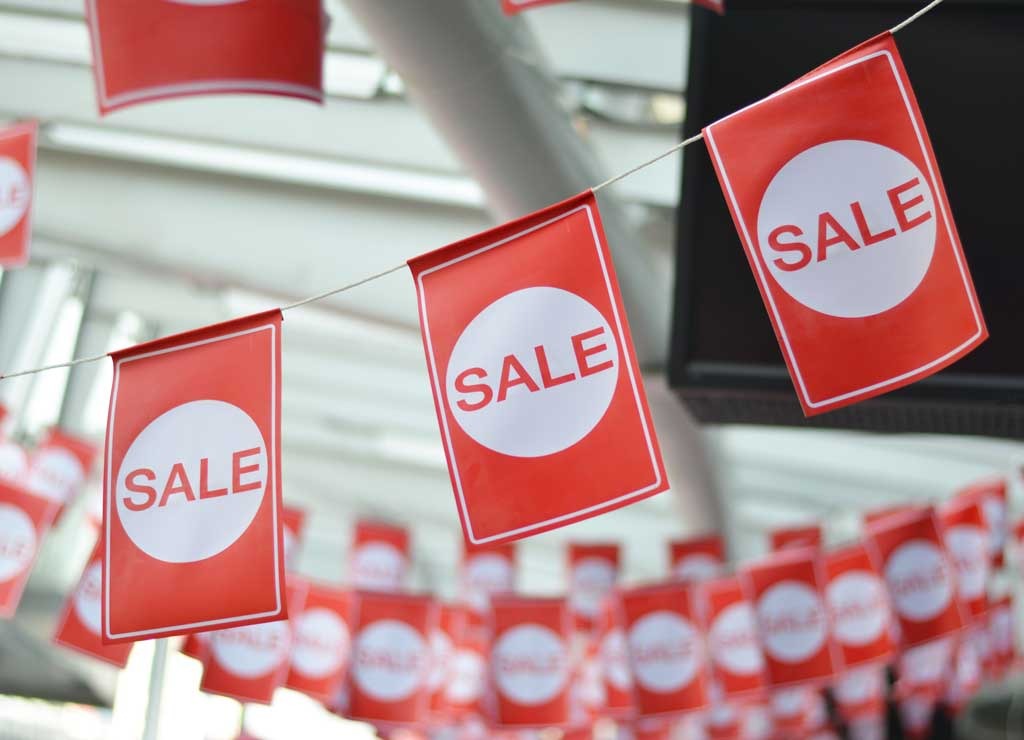
Speaking of signs, supermarkets also place more elaborate signs advertising pricier products. They’re usually placed around aisle entrances so it’s the first thing you see when strolling by them, causing you to stop and look. These eye-catching signs and product displays will grab your attention away from cheaper items, so don’t let your eyes deceive you.
Constant layout changes
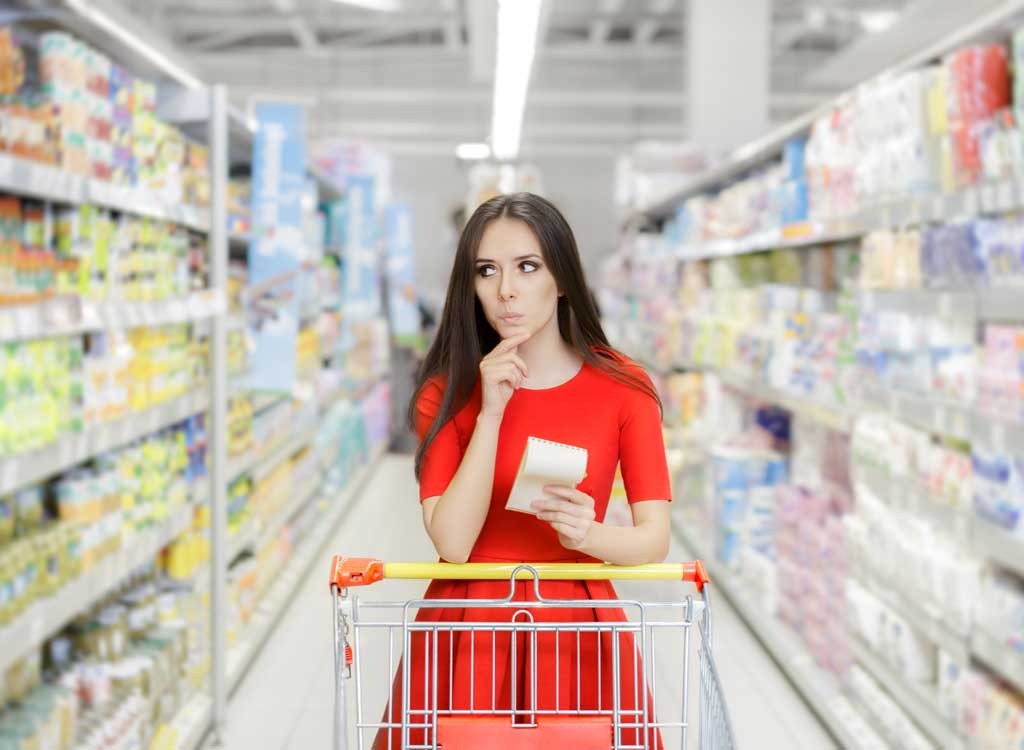
Layout changes are not only confusing, but they’re also a money-making tactic used by grocery stores. Every now and then, grocery stores switch up the store aisles so you end up accidentally coming across items that you didn’t need but still end up putting in your cart. Always read the aisle signs, no matter how frequently you shop.
Speaking of changes, Expect This Change to the Produce Aisle at Your Grocery Store.
Sensory overload
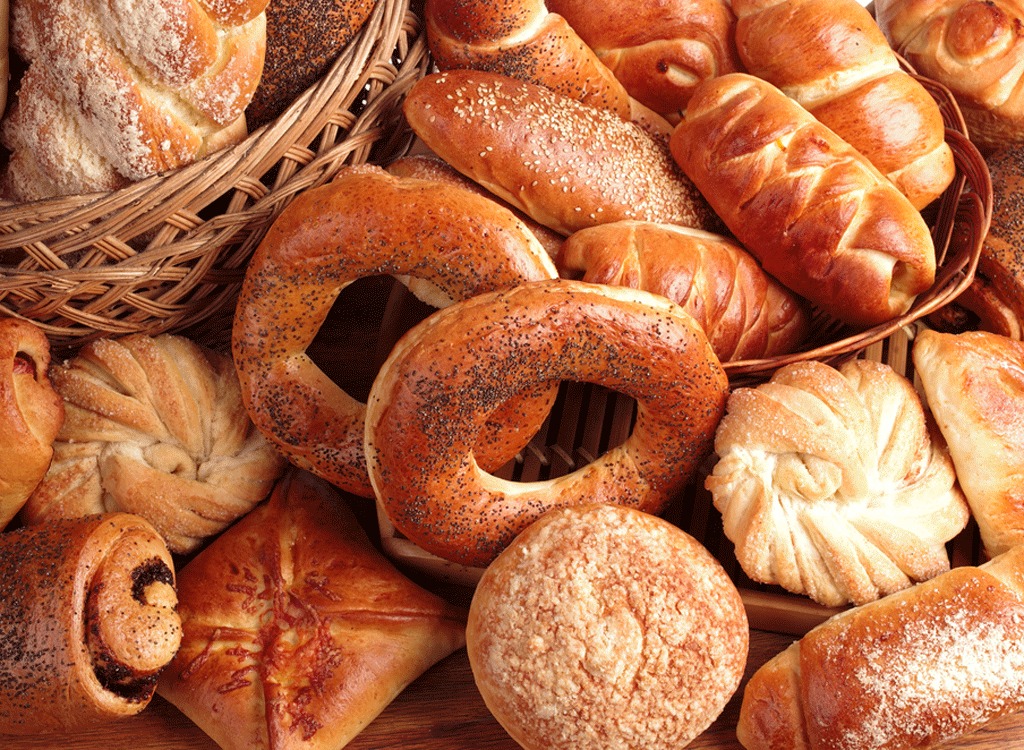
The supermarket bakery and flower shops are not just placed at the front of the supermarket for your convenience. They are the best-smelling items, and those smells can trigger your hunger. Supermarkets use your sense of smell against you by making you hungrier, which causes you to fill up your cart more and spend more money.
Soothing music

Grocery stores always have soothing music playing while you shop. It may add to the peace and serenity of shopping for food, but it’s not doing your wallet any favors. This music is being played so you slow your pace and linger in the store for longer. They’re hoping to keep you walking around the store so you aimlessly fill up your cart, causing you to spend more money.
Rewards cards
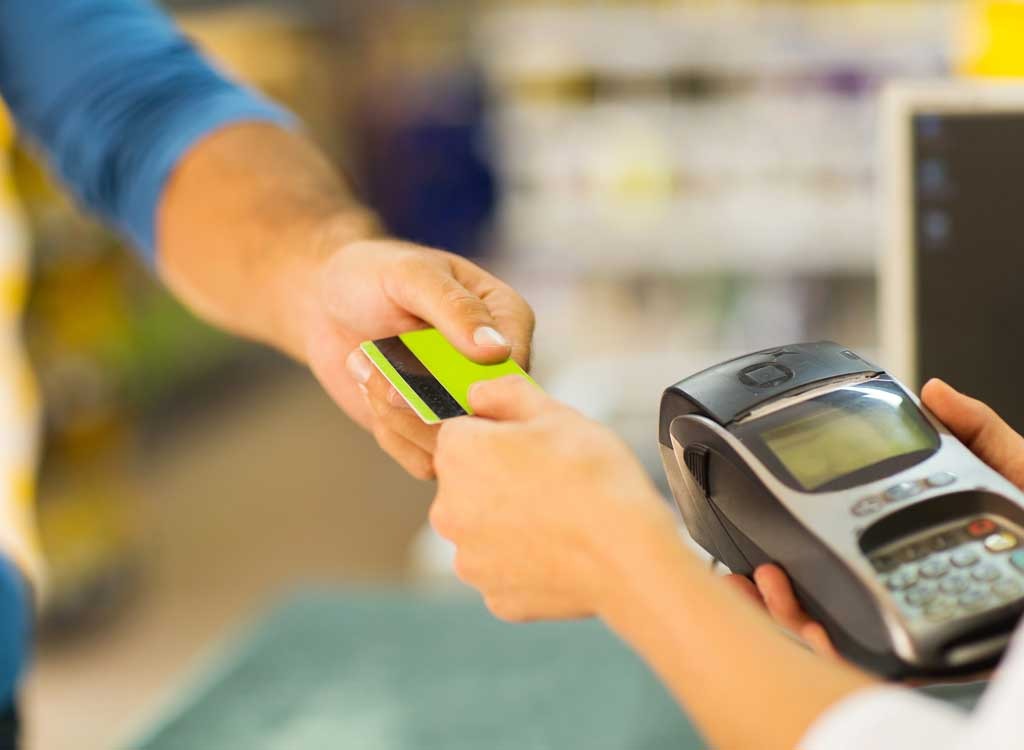
Rewards cards do come with a few exclusive deals, but overall they’re used as a gimmick by grocery stores to make you spend more money. Think about it: these rewards cards are mainly based on a point system, which gives you a certain amount of points per dollar spent. In order to receive special deals, you need a minimum number of points to get your reward, which gives you an incentive to spend more. Getting a rewards card can be a money saver if used right—just use it wisely.
Prices ending in $0.99
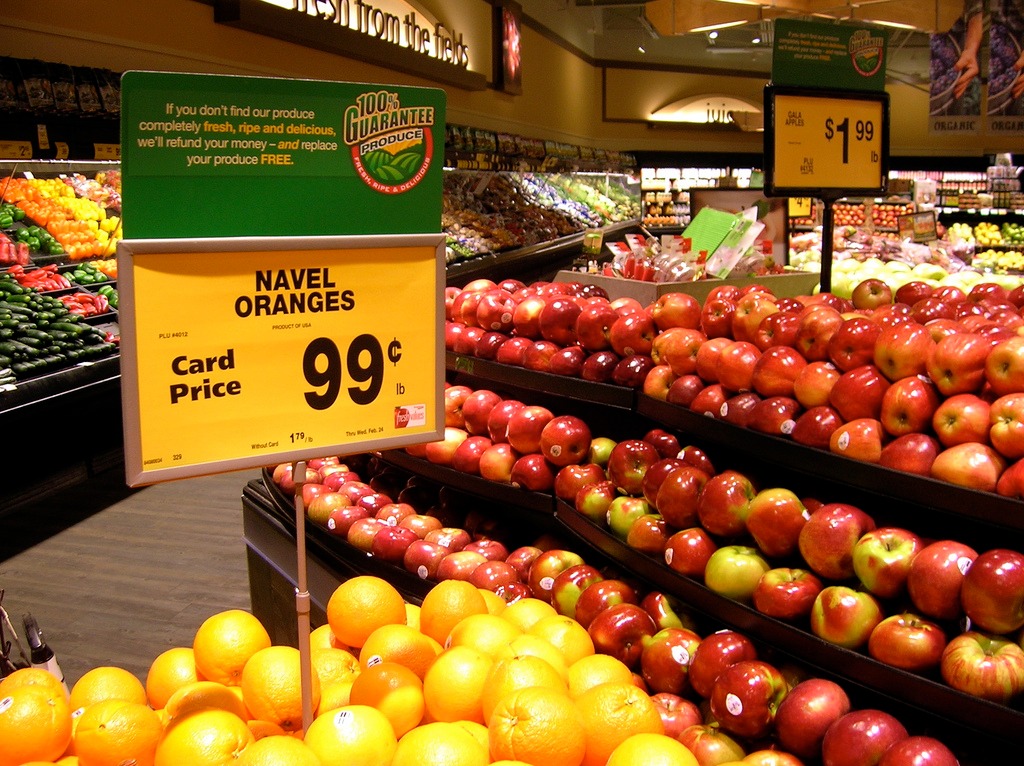
What’s the deal with prices ending in 99 cents instead of being rounded off to a flat dollar? It may seem like a randomly odd tactic, but it’s a genius way to make you spend more money. Ending prices off with 99 cents (or other odd numbers) tricks you into thinking that you’re getting a product for much cheaper when in reality the savings is as little as a penny.
‘Limited time’ offers
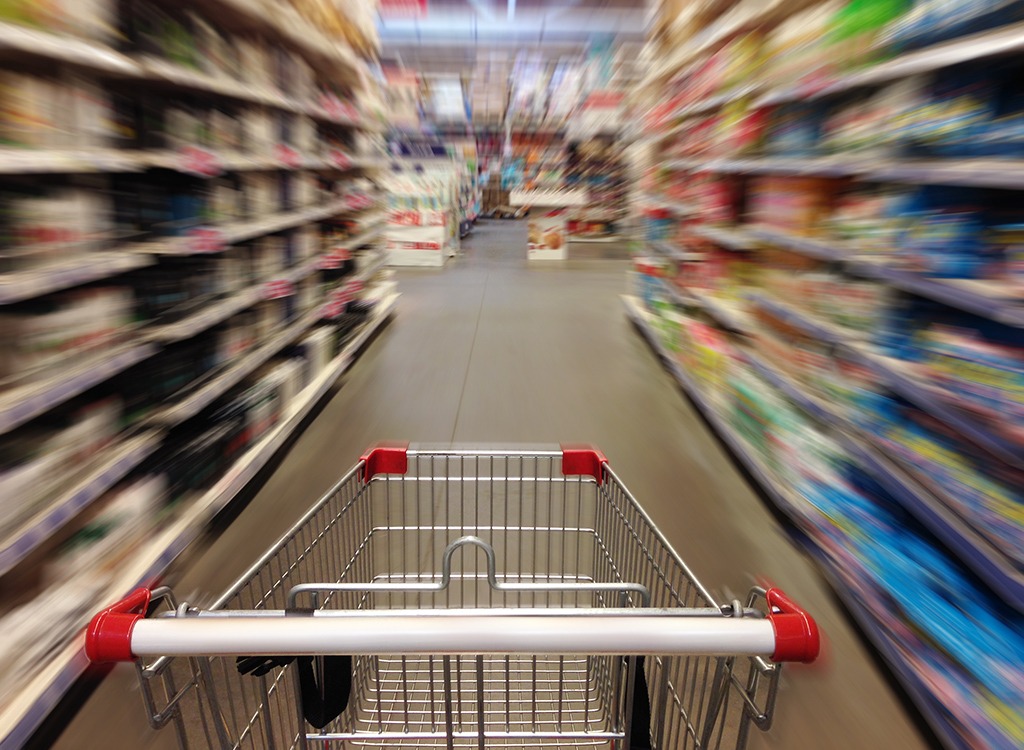
Seeing signs with a “limited time offer” statement may tempt you to overload your cart on one product, and that’s exactly what supermarket owners are trying to make you do. The sense of urgency and an empty promise of an expiring deal can push you to buy tons of one product, when in reality that “limited time” frame can last for months before the deal or item is gone for good. Instead of stocking up on these faux deals, stock up on these 50 Healthy Snacks To Keep You Slim.
For more, check out these 108 most popular sodas ranked by how toxic they are.
